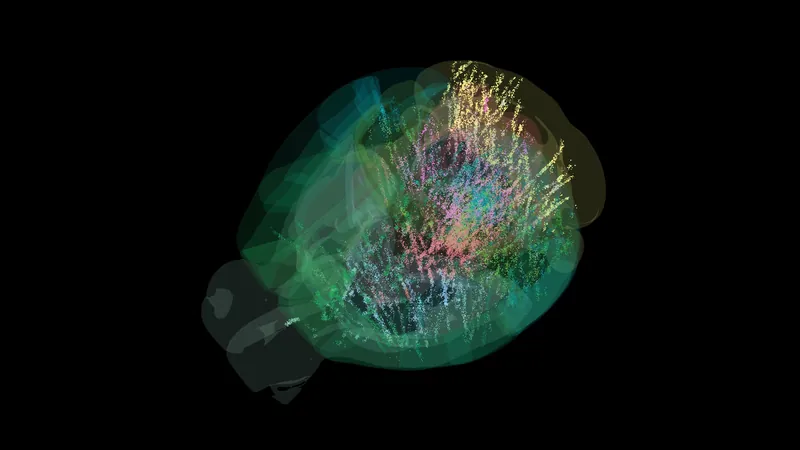
Groundbreaking Brain Map Reveals How Mice Make Decisions
2025-09-03
Author: Charlotte
In a groundbreaking study, scientists have unveiled the first comprehensive map of decision-making in a mammal's brain, utilizing mice turning tiny steering wheels to move shapes on a screen.
For years, neuroscience has focused on isolated clusters of neurons, but experts are now realizing that decision-making involves a vast network of brain regions.
"Traditional methods limited our understanding; the brain continuously engages in decision-making across multiple areas," explains Ilana Witten, Ph.D., a neuroscience professor at Princeton University.
A Collaborative Breakthrough in Neuroscience
Working with the International Brain Laboratory (IBL), a consortium of 22 labs from around the globe, Witten and her colleagues embarked on an ambitious project to understand the intricate networks that guide decisions. This resulted in groundbreaking research published in the prestigious journal Nature.
The study captured the activity of over 600,000 neurons across 279 brain regions in 139 mice, offering an unprecedented view of how different neural regions interact during decision-making processes.
Mapping the Brain's Decision-Making Process
Creating a brain map, even one as small as a mouse's, posed significant challenges. Alejandro Pan Vazquez, Ph.D., noted, "This has never been accomplished before. Coordinating data from multiple labs was a monumental feat in itself."
Princeton's team played a crucial role in organizing this collaboration, ensuring rigorous quality control, and establishing shared methodologies for data collection and analysis.
A Simple Task with Complex Implications
The experiments were deceptively simple. Mice were trained to respond to a fleeting black-and-white striped circle appearing on either side of a screen. By maneuvering a tiny steering wheel, they could earn a sweet reward. Some trials challenged their ability to predict the circle's position based on prior experiences.
As the mice completed the tasks, researchers employed high-density electrodes to capture brain activity from hundreds of neurons across different regions simultaneously, creating an extensive dataset from 12 participating labs.
Revolutionary Insights into Brain Functioning
The mapping revealed unexpected insights, showing that decision-making isn't confined to traditional cognitive areas but is also active in regions historically tied to movement.
Witten emphasized, "This work shows decision-making is widely distributed throughout the brain, even in areas previously thought to be unrelated."
A Resource for Future Discoveries
The findings serve not only as a major step forward in understanding decision-making but also provide a treasure trove of data for future research. Witten hopes the research inspires others to explore the dataset for new discoveries.
A New Era of Collaborative Neuroscience
Ultimately, this massive collaboration exemplifies what can be achieved when scientists unite toward a common goal. Tatiana Engel, Ph.D., remarked, "This brain-wide map is just the beginning, igniting a new chapter in neuroscience that no single lab could explore alone.









 Brasil (PT)
Brasil (PT)
 Canada (EN)
Canada (EN)
 Chile (ES)
Chile (ES)
 Česko (CS)
Česko (CS)
 대한민국 (KO)
대한민국 (KO)
 España (ES)
España (ES)
 France (FR)
France (FR)
 Hong Kong (EN)
Hong Kong (EN)
 Italia (IT)
Italia (IT)
 日本 (JA)
日本 (JA)
 Magyarország (HU)
Magyarország (HU)
 Norge (NO)
Norge (NO)
 Polska (PL)
Polska (PL)
 Schweiz (DE)
Schweiz (DE)
 Singapore (EN)
Singapore (EN)
 Sverige (SV)
Sverige (SV)
 Suomi (FI)
Suomi (FI)
 Türkiye (TR)
Türkiye (TR)
 الإمارات العربية المتحدة (AR)
الإمارات العربية المتحدة (AR)